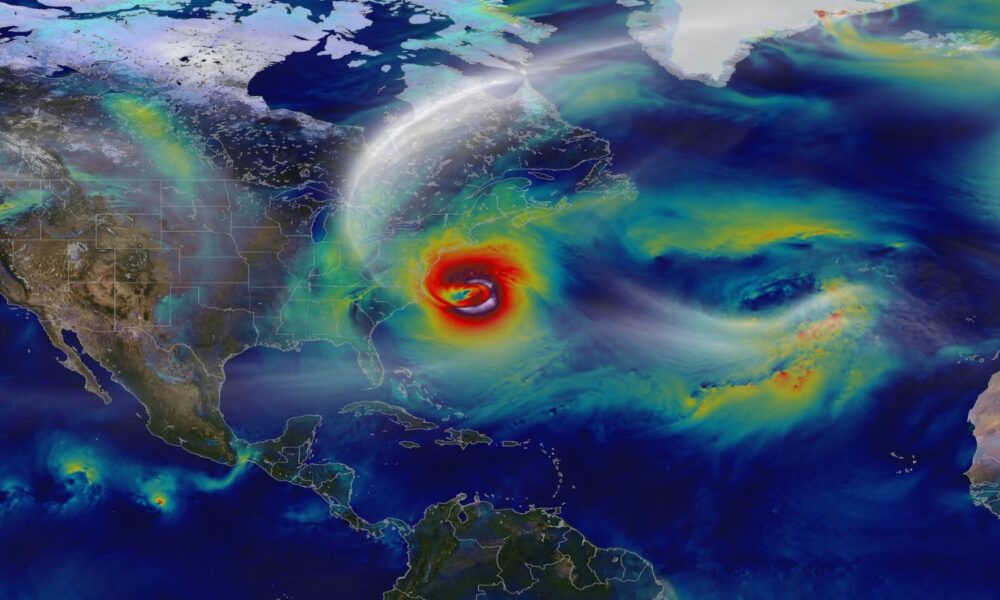Attribution science, which is about understanding the role of climate change versus natural weather patterns and climate variability, can help us better understand the connections between extreme weather and climate change, provide new insight into what specific emissions are driving the worst impacts, and help shape climate solutions.
Two types of climate attribution science—event and source—are helping answer two key questions. First, did climate change alter a given weather event? And second, what emission sources are contributing most to climate change? Studies now can explain how much climate change makes a heatwave hotter or a hurricane-related downpour more intense, as well as where the emissions came from.
The history of climate attribution science
This current type of climate attribution has been around for about two decades, which makes it an incredibly new scientific endeavor. But in that short time there have been impressive advances, and the field is growing rapidly.
The study of climate attribution began to be more widely accepted in the 1990s, when scientists made advances in their computer models to simulate the Earth’s climate and explore the causes of observed changes. Climate attribution science uses statistical methods and computer models to compare observed climate data with global climate simulations that include and exclude human influence. By comparing these two data sets, scientists can determine the probability that human activities are responsible for observed changes in temperature, precipitation patterns, sea level rise, and other climate change indicators. They can also look at known carbon emission sources and model the world with and without those added emissions.
Event attribution: Climate event attribution determines how climate change has influenced the likelihood or intensity of specific extreme weather events, such as heatwaves, droughts, floods and storms. Event attribution science studies have found that climate change has altered:
- Extreme heat events. One study found that human-caused climate change made the 2019 European heatwave as much as 100 times more likely to occur.
- Tropical cyclones or hurricanes. Attribution science shows that climate change increased Hurricane Harvey’s rainfall by at least 15 percent.
- Droughts. A study of a 2018 South African drought found that climate change made it three times more likely.
- Precipitation events. Another study found that climate change made severe flooding in the United Kingdom 43 percent more likely during the winter of 2013-14.
- Wildfires. Research shows that climate change has nearly doubled the area wildfires burned in Western US forests and increased the frequency of large fires in California by a factor of five.
As extreme weather events have become more frequent and severe, climate event attribution science underscores the need to dramatically reduce carbon emissions and help communities adapt to the climate change impacts.
Source attribution: Climate source attribution science identifies the pollutants that cause climate change. This research determines the relative contributions of different emission sources, including the oil and gas, agricultural, industrial, and transportation sectors, to the overall increase in heat-trapping gas concentrations in the atmosphere.
Climate source attribution science involves a range of techniques, including measuring atmospheric concentrations of heat-trapping gases and their isotopic signatures, analyzing emissions data from different sectors and regions, and modeling studies that simulate the sources and transport of global warming gases in the atmosphere.
Scientists have long known that burning fossil fuels is the primary cause of the increase in atmospheric carbon dioxide concentrations, but now they can identify the specific sources. One study led by my colleague Brenda Ekwurzel, for example, found that emissions traced to the 90 largest carbon producers contributed approximately 57 percent of the observed rise in atmospheric carbon dioxide, nearly 50 percent of the rise in global average temperature, and around 30 percent of global sea level rise since 1880. Another study by another UCS colleague, Rachel Licker, showed that emissions traced to the world’s largest fossil fuel companies are responsible for more than half of the ocean’s acidification since preindustrial times.
Climate source attribution studies can inform strategies to reduce carbon emissions. By identifying the major sources of emissions and their geographical or sectoral origins, attribution science can help governments develop targeted policies to address climate change at its source.
Next steps for attribution science
Attribution science has come a long way in a relatively short time, but it is an emerging field and there are several research areas that are likely to be important in the coming years. Some possible directions for future research in attribution science include:
- Developing new methods for work in the Global South: One of climate attribution science’s challenges is the limited availability of high-quality observational data. In many parts of the world, weather stations and other observational tools are scarce, outdated or have not been in place very long, making it difficult to accurately track weather patterns and identify climate trends. To address this challenge, scientists must develop new methods for analyzing satellite and other remote sensing data to expand the geographic scope of attribution work.
- Examining regional impacts: While attribution science has made important advances in understanding the global impacts of climate change, there is a growing need to better understand how climate change is affecting specific regions and communities beyond single major extreme event studies.
- Quantifying slow, onset events: Another climate attribution science challenge is attributing long-term trends from slow onset disasters, such as sea level rise, to human activities, because natural variability can play a significant role in these trends. But it is possible to separate the impact of natural variability from those of human activities, allowing for more accurate attributions of long-term trends in temperature, precipitation and other climate variables.
- Studying compound events: Climate change is really a series of interconnected events, such as droughts followed by wildfires, or heavy rainfall followed by flooding. A next step for attribution science it to analyze these compound events and try to understand how they are affected by climate change.
Linking attribution science to action
This field of research has already enabled scientists to better understand their work and, as the field advances, it has the potential to inform climate action and help municipalities, states and countries prepare for and adapt to a radically changing climate.
By providing clear and compelling evidence of the role played by specific emission sources, notably the fossil fuel industry, scientists can build public support for the policies, litigation and other actions needed to hold carbon producers accountable, cover the cost of losses and damages that communities have already suffered, implement adaptation strategies, and mitigate further impacts. Attribution science has and will continue to inform critical societal decisions.
Attribution science also can be applied in daily decisionmaking by helping people understand the relative scale of the different risks associated with climate change. If policymakers know that a particular extreme weather event, such as a heatwave or a flood, is more likely to occur as a result of human activities, they can take steps to reduce their community’s vulnerability and strengthen its resilience. It is also important for communicating the urgency of taking action. And to better link attribution science to action, scientists need to make their findings accessible and integrate this growing field into the decisionmaking process.
While I am very encouraged by the advances scientists have made in such a short time, as we move forward and continue to advance attribution science there is a need for greater collaboration among scientists, policymakers, litigators, impacted community members, and the general public to address the climate crisis.

